"Can You Hear Me, Now?"
- Lions, Eagles, and Bears

- Nov 2, 2024
- 11 min read
Updated: Nov 8, 2024
Homestead Communications - A Dive into Radios

As a prepper and homesteader, there are many areas you need to address and bring up to snuff:
· Food/Gardening/Preservation
· Shelter
· Water
· Safety/Security
· Medical needs/Emergencies
We’ve talked about most of those in this blog over the years.
An area often neglected is Communication.
When the pandemic hit, we discovered that communication was something we had not considered. We were at the mercy of the mainstream news and social media. As we all found out later, public information was filtered and heavily biased. Alternative voices were suppressed and misleading stories were hyped.
More importantly, we couldn’t trust that any information we heard about civil unrest or physical disasters was accurate. We couldn’t even effectively communicate with each other.
We learned that walkie-talkies were useless on our farm. When Bob did a security run (we had problems with trespassers and troublemakers during the lockdown) he couldn’t contact anyone for help or backup.
In response to this void in our preps, I determined to get my ham radio license. I’m a nurse with a strong biological science background. I have absolutely NO electronic or electrical background at all.
None. Zip. Zero. Nada. Nothing.
I needed to learn the vocabulary.
Then the information.
It was horrible. I was learning a foreign language and there was a test at the end.
But I did it, getting my Technician license in July 2020.
I was 62 years old at the time. And a woman.
I then went on to study and pass two more exam levels, earning my Amateur Extra ‘ticket’ about 18 months after my first license. I belong to a fantastic Ham Radio club with lots of support and camaraderie.
I applied for and got my father-in-law’s call sign – he was a ham before he died - W8PIK.
Through this process I’ve studied the needs and concerns of preppers and homesteaders related to communications.
Here is where I’ve landed:
There are a lot of questions about what type of non-cellular off-grid communication is best for homesteaders and preppers. This is especially pertinent to us because there is no cell service in our rural area.
Just like buying a firearm, there are many variables to consider for each situation and person. Obviously, there isn’t a single solution for all folks and their homesteads.
For this article, I’ll be looking at basic walkie-talkies, GMRS radio and Ham Radio. I’ll briefly talk about CB radios at the end. This is a more technical article than the usual blog we post, but this is the information I wish I had known when I started investigating communications on the farm.
First, let me define some terms:
Range – how far will each type of hand held device transmit?
Line-of-sight – do you need to be able to see the other guy to speak with him?
Power – how many watts of actual transmitting power does the device have? Watts are what PUSH the signal out into the air. The higher the wattage, the more push you have and a greater possible signal strength. The maximum watts permitted is determined by the FCC.
Antenna – does the handheld have a short, fixed antenna or a much longer, detachable flexible one? Can you remove the stick antenna and attach a free standing antenna to your device, which will increase the range? (This usually applies to a base station.)
License – does the FCC (Federal Communication Commission) require a license and how hard is it to get one?
Cost – what should you budget for your first radio?
Types of radio services in the US:
FRS (Family Radio Service) – generally known as a Walkie-Talkie.
They are available as cheap toys or you can buy an upgraded version to use when hunting or on vacation.
They don’t require a license from the FCC, have a maximum output of 2 Watts, and in absolutely perfect circumstances, have a range of 5 – 25 miles.
Realize that this maximum range is only achieved if both people are standing on mountain tops that are the same height and nothing is between you.
Some manufacturers also advertise distance over the water, which is a flat, open area. They may define this as the Ship-to-Shore range.
In reality most FRS radios have a range of 1 mile or less. A house or stand of trees between you and your buddy can block the signal. Performance in the city is usually less than a mile, too.
FRS uses channels which have specific short-range wave lengths assigned to them. You all must be on the same channel to speak to one another.
FRS/Walkie-Talkies are good for talking between the house and the barn, from one room to another, or working animals in a pasture where you have line-of-sight.
FRS make great gifts for kids – we have given many sets to the grandkids over the years. They are available for $15/set or less for cheap ones, a decent set will cost about $40. You can spend a lot of money on FRS radios but in reality, you won’t get any better performance. Much of the upgrade will be related to battery performance and the durability of the set. If the radio is rechargeable, they will cost more but these radios really eat up disposable batteries so buying a rechargeable will save money in the long run.
GMRS – General Mobile Radio Service.
If you want more range and power, but aren’t ready to leap into Ham Radio, you should consider a GMRS radio.
GMRS has a 50 Watt power limit for mobile, base, or repeater stations, 15W for fixed stations (a permanent base station), and handhelds are between 0.5 and 5W depending upon channels being used.
You can see that is a definite boost from FRS.
Some areas have GMRS repeaters which can send your signal even farther. Repeaters are privately owned and maintained powered antennas that receive and then re-transmit the signal. They are not available everywhere but most large cities have them. If you really enjoy operating GMRS, you can install your own repeater to increase your signal coverage.
License required – You must apply for a GMRS license on the FCC website. There are no testing requirements and once you get a license your entire immediate family can use the call sign. Spouse, kids, grandkids, siblings, parents, grandparents, nieces, nephews, aunts, and uncles.
There is a process to obtaining the license:
· .
Government websites are a pain in the quester to navigate.
This guy, Rocky Talkie, wrote a very detailed blog about getting a GMRS license – check it out:
GMRS radios are available as a handheld or a base station. The advantage of a base station is you can put up an aerial antenna outside to send the signal farther. The base station I have uses coax and I have a simple wire antenna attached. I have a base for the house and one for our UTV. I secure the base to the dash of the vehicle with some Velcro.
The house station is with my other radios in my ‘ham shack’. I recently bought an antenna to mount on my antenna tower so I can reach farther away. The base station uses a solar generator or other DC power but the handhelds are rechargeable with a long battery charge.
GMRS also uses channels, which correspond to specific, limited radio wavelengths. Some GMRS radios are designed like ham radios but are programmed to receive the GMRS bands.
GMRS range is considered to be 1 – 25 miles, but again, geography and topography make a huge difference in actual, usable range.
GMRS is especially useful for rugged terrain like our 500 acre wooded farm with many hills and other obstructions. We can easily talk more than 2 miles apart when all the leaves are on the trees. Our signal is clear and strong. That gives us good communication from one end of the farm to the other.
The added benefit is no one else in the family needs to apply for a license to use the radios. I just handed them out after labeling them with the call sign and unit number. We have chosen a specific channel for the family to use, but a family wanting a private conversation can easily switch to another one.
GMRS are also available in a wide price range. Durability and battery life influence the price. Amazon carries a few low-end brands including Midland, Baofeng, and Radiocity. They work just fine. Most handhelds are under $100 a pair. They also make base-stations which cost a bit more. I paid about $129 for my Radiocity base. These manufacturers also carry walkie-talkie and/or ham radios so make sure you get GMRS. You want to stay within the restrictions of your license.
If you want to upgrade to a much better radio, check out DX Engineering (www.dxengineering.com ) for some very nice GMRS radios. Just put GMRS in the search bar. You will pay several hundred dollars for a quality radio.
I was able to buy 2 Radiocity handheld radios during the October Amazon Prime Days. I think they have another sale before Christmas, too. I don’t spend hundreds of dollars on a radio that may be left on a tractor seat or dropped while logging but I wouldn’t mind upgrading my base station. I’ll be checking out DX Engineering’s Black Friday sale.
FYI – the radios do not need to be made by the same manufacturer to be used together. Every manufacturer must make sure that, for example, GMRS Channel 4 is frequency 462.6375 and so forth.
GMRS radio comes in both a hand held and a base set. You can upgrade the antenna for better performance. There are many GMRS YouTube videos available to help you.
Amateur Radio or ‘Ham Radio’
Ham Radio is the gold standard of off-grid communications.
Hams, as the license holders are called, have many contests, activities, and programs for practicing off-grid/non-electric power transmitting and receiving. There are also hams who enjoy using low-power to see how far they can reach with minimal power.
Almost all hams have a grid-connected ham shack set up in their house/garage/shed dedicated to their radios and all the extra gear, but, as the recent North Carolina disaster illustrated, the ability to run an off-grid set up is important to have squared away.
Ham radio maximum power varies based upon the frequencies you are using, but the maximum output a ham radio can use is 1500 Watts. (FRS is 2, GMRS is 50)
With ham radio you can literally circle the globe from your ham shack.
However.
The learning curve for Amateur Radio is much longer than the other services. It is more complex, the radios are more complicated, and it truly is a hobby requiring life-long learning.
Range – the world. But – you may not easily reach your next door neighbor. The radio wavelengths used by ham radio frequencies are absolutely huge. They bounce right over your neighbor’s house and it may be difficult to talk unless you are using a technique called Simplex on the UHF and VHF frequencies. Luckily, these frequencies are available to use when you have the entry level license known as Technician.
Licensure – The FCC requires you to have a license to operate on ham radio. There is a test you must pass before your call sign is given to you. Each level of licensure requires testing.
In the USA the three licenses currently available are Technician, General, and Amateur Extra. There are some folks who have been licensed for a long time and may have some older licenses such as Novice or Advanced.



Being part of a Ham Radio club is the best part of operating ham radio. Here are some club members participating in an off-grid event.
As you can see by the guy at the grill,
there is always food.
Good news – you no longer need to pass a Morse Code test to get any of the licenses, though Morse Code, or CW as it is known to hams, is experiencing a bit of a revival among younger hams.
A licensure costs $35 for 10 years. Testing is done by local Ham clubs and costs about $15 to cover their expenses. Study guides are available for purchase and at some libraries. Make sure you are studying the most recent guide. The tests are changed every 4 years.
If you keep your license current you only need to test once for each level.
Cost – How much have you got?
You can buy a handheld 2meter/70cm unit for about $25. It will be a cheap Chinese radio but it will work. For a while. You won’t have much tech support for it, though. Amazon carries Baofeng and a few other inexpensive radios.
You can also go to DX Engineering and, after qualifying for a home equity loan :-), outfit your shack and put up an antenna for about $20,000. Or more.
Most hams are spending somewhere in between.

A good HF base station (used once you get your General or Extra license) will run $800 – 1500. You should be able to use that station for the rest of your life.
Hams call that a “Buy Once – Cry Once” purchase.
2M/70cm stations are less expensive and many are designed to be used either in your vehicle or from home.
Antennas also come in a wide range of designs, sizes, and price.
It doesn’t stop there:
There are the Build-Your-Own guys……..
And the Experimenters………………….
And the Satellite Bouncers………………….
And the QRP guys ……………………………
And the Digital lovers ………………….
And the Contesters………………………….
Don’t forget POTA …or SOTA……or JOTA…….
There are so many options, ham radio can be overwhelming. And a whole lot of fun!
--------------------------------------------------------------------------------------
But that takes us away from the original question –
which type of communication is best for off-grid homesteading and prepping use?
My thoughts –
For internal family communication – if I want to know what Bob found when he was checking out a loud noise or smoke from somewhere else on the farm… I want GMRS.
If I am arranging the group meal at 1pm – GMRS.
If I want let the crew know that cows are out – GMRS.
If the night security team has a problem – GMRS.
An added bonus is very few people use GMRS so the channels are pretty secure.
If I was building a neighborhood response team for emergencies, I would use GMRS, too.
Imagine setting up one channel for the entire group to communicate and other channels specific to individual groups or teams.
Security team would use Channel 23.
Food Production - Channel 16.
Logging Crew – Channel 13, and so on.
Maybe assign a check-in time each day on a specific channel for the group. I see a lot of potential there.
Another consideration is that ham radio can only be used by licensed operators at the control. Since no one else in my family was interested in doing the work to get a ham license, GMRS is the best way for our family members to communicate.
Ham operators DO police their airways and work to take down any illegal operators.
For information about what is going on in the world – outside of my immediate area – I want Ham Radio and a directional antenna.
I can point the antenna toward my interest and call for anyone in that area. There are other techniques hams can use to make a short hop with the radio waves or a very long jump bouncing off the moon, a satellite, or the ionosphere.
Ham Radio groups set up Nets (a web of ham operators with one Net Controller in charge, receiving messages) to coordinate information during the North Carolina and Florida disasters.
Local groups do this throughout the United States in response to large scale emergencies.
They practice alongside first responders during drills.
Even if not participating in the Net, a ham can listen and get the information he/she needs.
Think how helpful that would be during the forest fires out West or similar situation – you could monitor the direction of the fire and be ahead of public announcements. (You should never interfere with an emergency net, but you can listen.)
FRS walkie-talkies are OK for the kids and to communicate in a limited area. I would not consider them secure. They work inside the house between floors, etc. I can see their limited use.
I haven’t written anything about CB radios.
For one thing, I don’t know much about them.
The other issue is the amount of inappropriate traffic on those airways. I wouldn’t consider a CB radio secure for even the most basic use.
The FCC recently expanded their usable bandwidth – which means they have more channels available. There are no licensure requirements.
There are some very dedicated CB users.
If it works for you and your family – go for it.
Some folks have them to listen to CB Channel 9 which is the Emergency Communication and traveler’s assistance channel.
There are scanners to automatically scroll through the channels looking for communications. They are pretty common and that makes CB radio less secure and less attractive to me.
All of these airwave transmissions are public – if the public has the right device and locks in on your channel.
Security in this instance means which type of device is less likely to be used by my neighbors or some bad actor?
For our family that’s GMRS and Ham.
73
Polly
W8PIK






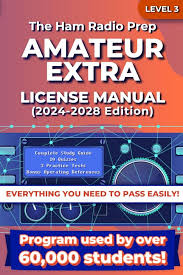

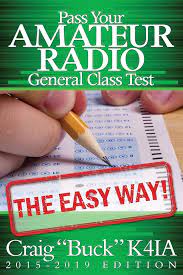

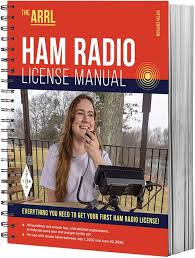
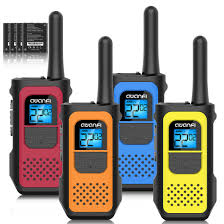
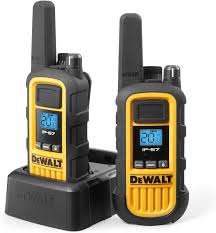
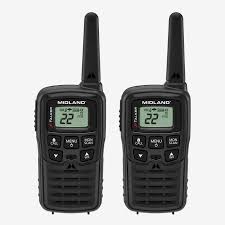
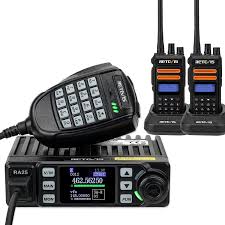
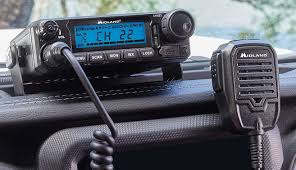
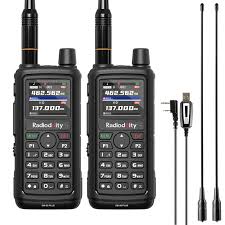



Comments